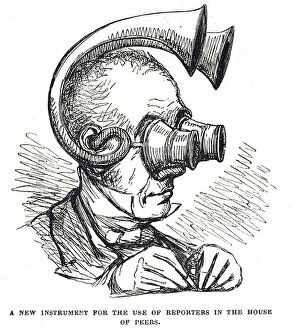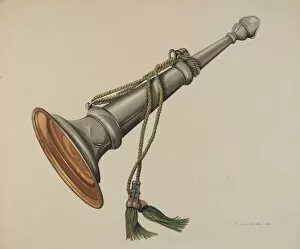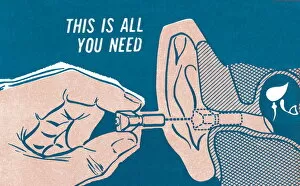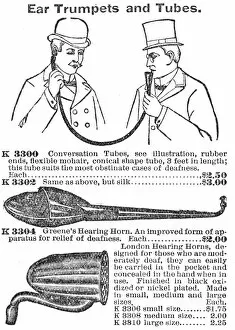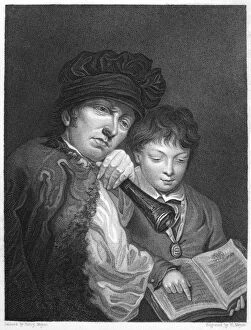Hearing Aid Collection
"Unveiling the Evolution of Hearing Aid: From Fire Marshall Trumpet to Ear and Hearing Device" Step back in time to witness the fascinating journey of hearing aids
All Professionally Made to Order for Quick Shipping
"Unveiling the Evolution of Hearing Aid: From Fire Marshall Trumpet to Ear and Hearing Device" Step back in time to witness the fascinating journey of hearing aids, as we explore a collection of captivating images. In 1939, inventor Thomas Dooley introduced the world to the Fire Marshall Trumpet - an early prototype that aimed to amplify sound for those with hearing impairments. This groundbreaking creation paved the way for future advancements in auditory technology. Traveling through history, we stumble upon itinerant musicians playing their melodious tunes in a poor part of town. With makeshift notes written on paper, they ingeniously adapted their instruments to assist those struggling with hearing loss. Delving further into the past, we encounter "Another Year by the Old Clock, " a poignant illustration from Harpers Bazar in 1870. This evocative image reminds us of how precious sound is and how vital it is for everyone to experience life's symphony. Turning our attention towards August 18th, 1808, we uncover Fig 1 from The Secret History of Crim Con. This intriguing depiction hints at early attempts made by society to address hearing difficulties through innovative devices. Fast forward to c1820 when William Greatbach's artwork titled "Reading the Will" captures a scene where individuals lean closer together as if straining their ears - perhaps highlighting challenges faced by those hard-of-hearing during important conversations or events. The late 18th century introduces us to a starving poet and publisher depicted by artist Thomas Rowlandson. In this poignant portrayal, one can't help but wonder if his artistic genius was hindered due to an undiagnosed hearing impairment. Lambert Lombard's self-portrait from c1550-1566 reveals yet another facet of historical struggles related to auditory limitations. Could this renowned artist have been silently battling against diminished hearing while creating masterpieces.


